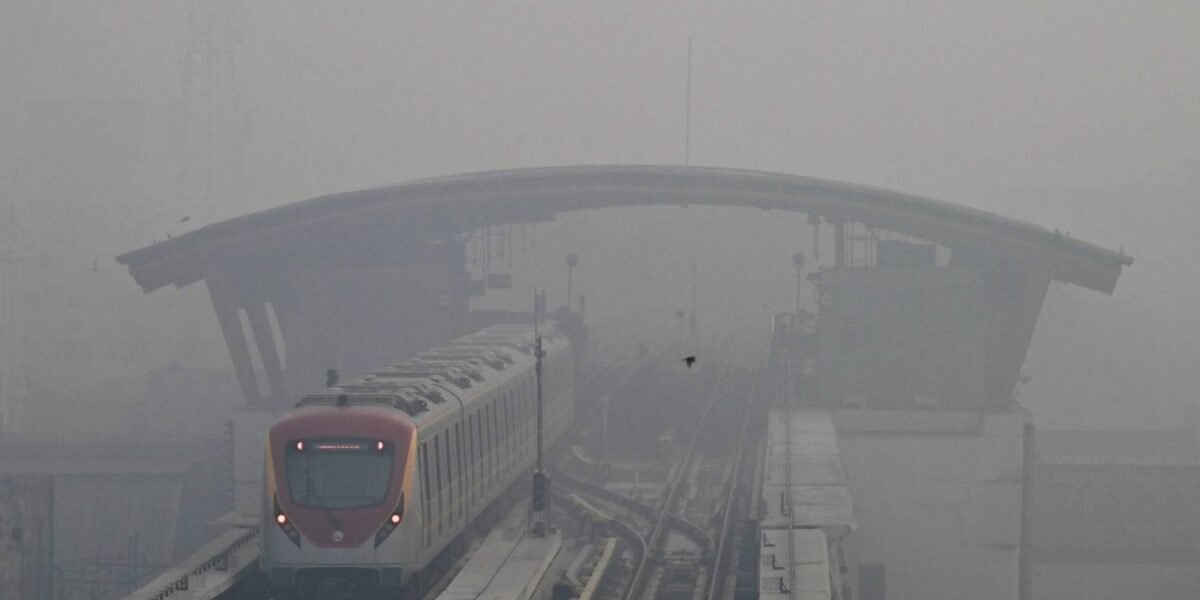LAHORE: The Air Quality Index (AQI) of Lahore, the capital of Pakistan’s most populated province, dropped to the worst levels on Earth again on Thursday.
The Lahore AQI, which measures a range of pollutants, recorded at 784, which means the air quality in the city, home of more 14 million people, 93.6 times higher than is deemed healthy by the World Health Organisation.
The smog is not limited to Lahore but has also spread to other major cities the Pakistan most populated province, forcing the Punjab government to close schools in Lahore, Multan, Gujranwala, and Faisalabad divisions for ten days.
Reasons Contributing to Smog
According to health experts, the main contributor to smog is the practice of farmers burning crop stubble to clear their fields.
Although stubble burning is banned in Pakistan, weak implementation has allowed the practice to persist. Industrial emissions from factories and construction, as well as fumes from trucks and cars are also heavily contributing to the air pollution.
Pollution Poses Health Risks
UNICEF report say that nearly 600 million children in South Asia are exposed to dangerous levels of air pollution, with half of all childhood pneumonia deaths linked to it.
According to UNICEF report, every year, air pollution is estimated to cause the deaths of 130,000 children under the age of 5 in South Asia.
According to the University of Chicago’s Energy Policy Institute report, levels of smog in Lahore exceed those considered safe by the WHO, leading to an average reduction in life expectancy of residents by 7.5 years at current air quality levels.
Another report of the Chicago says that fossil fuel-driven particulate air pollution cuts global average life expectancy by 1.8 years per person.
Smog Side Effects on Human
According to UN Environment Programme report, air pollution is a global health crisis, causing one in nine deaths worldwide. In 2021, exposure to PM2.5 reduced global life expectancy by nearly 20 months.
The deadliest illnesses linked smog are:
- Mental Health Problems
- Diabetes
- Stroke
- Respiratory Problems
- Cardiovascular Issues
- Reduced Immune Function
- Long-term Health Effects
AQI: How smog is measured
An AQI below 50 is considered “Good,” between 51 and 100 is “Moderate,” 101 to 150 is “Unhealthy for Sensitive Groups,” 151 to 200 is “Unhealthy,” 201 to 300 is “Very Unhealthy,” and 301 and above is classified as “Hazardous.”
Essential tips for protecting yourself from smog
- Stay Informed: Regularly check air quality reports and stay updated. You can monitor live AQI levels here.
- Minimize Outdoor Activities: Limit your time outside, especially on days when the AQI is high.
- Use Air Purifiers: Consider using air purifiers to help remove pollutants from indoor air, ensuring a cleaner environment.
- Create a Smog-Free Zone: Keep doors and windows closed during high smog days to prevent outdoor air from entering your home.
- Use Masks: Wear a mask whenever you go outside to protect your lungs. Look for masks labelled N95 or higher, which are effective in filtering airborne pollutants.
- Consult a Healthcare Professional: If you have pre-existing conditions like asthma or heart disease, consult your doctor for personalized advice during smoggy periods.

















